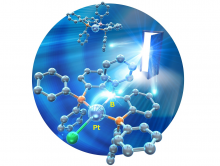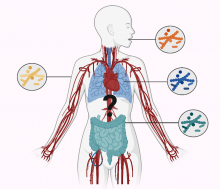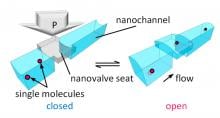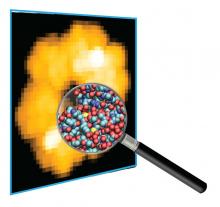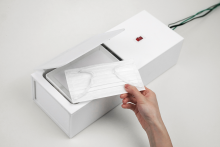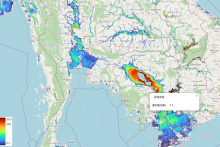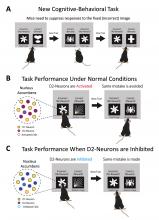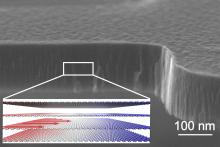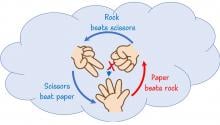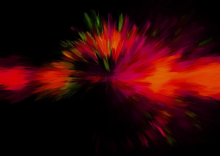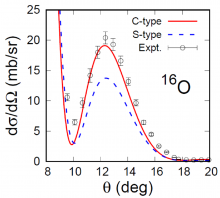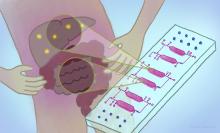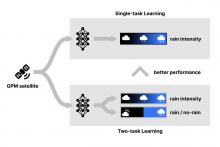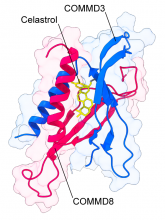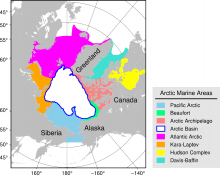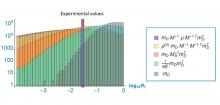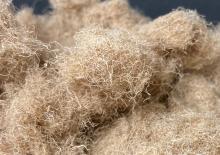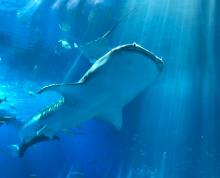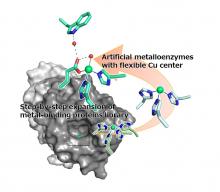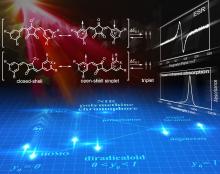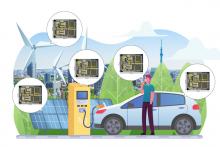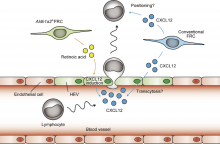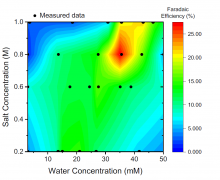Science
News
09 May 2023
Osaka Metropolitan University scientists elucidated the molecular structure of anionic Pt(0) complexes for the first time in collaboration with co-researchers at Paul Sabatier University - Toulouse III. The key to success is the stabilization of anionic Pt(0) complexes (which are usually unstable owing to their electron-donating nature) by the electron-accepting properties of boron compounds. The results of this research allow us to elucidate the properties and functions of highly active chemical species and provide new guidelines for their creation. The research is expected to lead to the development of innovative catalytic reactions mediated by these chemical species.
05 May 2023
Scientists from A*STAR’s Genome Institute of Singapore (GIS) have ascertained that there is no stable microbial community residing in the bloodstream of healthy humans. This is an important discovery as blood donations are a crucial part of medical practice. Understanding the types of microbes that are found in blood could allow for the development of better microbial tests in blood donations, which would minimise the risk of transfusion-related infections. The research was published in Nature Microbiology on 31 March 2023.
01 May 2023
A joint research group at Osaka Metropolitan University has succeeded in regulating the flow of single molecules in solution by opening and closing the nanovalve mounted on the nanofluidic device by applying external pressure. The research group fabricated a device with a ribbon-like, thin, soft glass sheet on the top, and at the bottom a hard glass substrate having nanochannels and nanovalve seats. By applying external pressure to the soft glass sheet to open and close the valve, they succeeded in directly manipulating and controlling the flow of individual molecules in solution. They also observed an effect of fluorescence signal amplification when single fluorescent molecules are confined in the tiny nanospace inside the valve. The effect can be ascribed to the nanoconfinement, which suppresses the random motion of the molecules.
27 Apr 2023
Allowing the direct observation of biomolecules in dynamic action, high-speed AFM has opened a new avenue to dynamic structural biology. An enormous amount of successful applications within the last 15 years provide unique insights into essential biological processes at the nanoscale – visualizing, for example, how molecular motors execute their specific functions.
26 Apr 2023
Researchers at the Institute of Industrial Science, The University of Tokyo, have developed a desktop charger with voltages high enough to replenish the electric charge on N95 and surgical masks, which is required for effective use
26 Apr 2023
An Osaka Metropolitan University scientist published a review article on numerous asymmetric reactions using arynes, organized by style, and detailed their outline and characteristics. Unresolved issues and prospects in this field were also described.
25 Apr 2023
Researchers from The University of Tokyo find a new approach to successfully identify areas at risk of flooding that can be missed by historical hazard maps.
25 Apr 2023
The Nobel prize winning physicist Niels Bohr once said, “An expert is a (person) that has made all the mistakes that can be made in a narrow field.” This idea that to master a skill we must learn from our mistakes and avoid making them in future has long been recognized; however, the brain mechanisms and pathways that control this ability have been poorly understood.
We revealed a specific brain pathway that allows us to identify and learn from our mistakes to guide better decision-making in future.
Our work is an important step towards understanding how the brain controls our daily choices and behavior. The identification of these cells as ‘mistake signalers’ may also help to guide new treatments for mental health conditions associated with impaired decision-making ability.
20 Apr 2023
Researchers at the Institute of Industrial Science, The University of Tokyo use isotopically purified graphite to study the phenomenon of heat flowing like a fluid, which can lead to new heat-sink devices for electronics.
19 Apr 2023
In the quantum world particles can instantaneously know about each other’s state, even when separated by large distances. This is known as nonlocality. Now, A research group has produced some interesting findings on the Hardy nonlocality that have important ramifications for understanding quantum mechanics and its potential applications in communications.
17 Apr 2023
Asia Research Newsは同所の女性研究者5名に、彼女らの研究について、そしてなぜKavli IPMUを選んだのか、これまでの同所での経験について話しを聞いた。それぞれ様々な背景を持ち、各分野で卓越している研究者らに、足かせのない女性がいかに飛躍できるかをみせてもらった。
14 Apr 2023
地球外生命が発見されれば、宇宙における私たちの存在意義に変化をもたらすだろう。しかしその探索に関する報道の在り方は、科学者やメディアにとって未だに大きな課題である。
14 Apr 2023
東京工業大学地球生命研究所(ELSI)のサイエンスコミュニケーションコースでは、大学院生が多様な対象に研究を伝えるための実践的なスキルの習得を目指す。
13 Apr 2023
A research group at Osaka Metropolitan University has succeeded in selectively recovering trace rare earth elements in synthetic seawater and environmental water, such as hot spring water, using baker’s yeast with a phosphate group added. The phosphorylated yeast is expected to be utilized as a material for recovering useful metals and removing toxic metals, thereby contributing to the realization of a metal resource-circulating society.
12 Apr 2023
Osaka Metropolitan University scientists have developed a theory to experimentally determine differences in nuclear structure. Using this method to assess carbon and oxygen nuclei revealed that they contain more components in their cluster structure than in their shell structure. This enables visualization of nuclear structures without large-scale numerical calculations, which are expected to be applied to heavier nuclei in the future. This suggests that the method could be used to solve the ultimate question in nuclear physics: where did the elements we see around us come from?”
10 Apr 2023
AI finds the first stars ✨were not alone, Auto-switch for large electronic devices, A metabolite against autoimmune diseases, & Converting fruit waste 🍊🍉into solar stills. Plus in our blog: A career worth doing, a life worth living. Read all in the latest Editor's Choice.
07 Apr 2023
A tiny platform empowers scientists to examine how gut and liver cells interact in health and disease.
06 Apr 2023
Researchers from the Institute of Industrial Science, The University of Tokyo, find that a deep-learning model that simultaneously learns to classify satellite data as rain/no-rain while determining rain intensity outperforms other models.
05 Apr 2023
Researchers from Osaka University found that the COMMD3/8 complex is implicated in the progression of the autoimmune response in a mouse model of rheumatoid arthritis. They identified celastrol, the active compound of a medicinal herb, as an inhibitor of the COMMD3/8 complex. Celastrol blocked the progression of rheumatoid arthritis. Thus, celastrol is a potential lead for developing treatments against rheumatoid arthritis.
04 Apr 2023
Marine predators have expanded their ranges into the Arctic waters over the last twenty years, driven by climate change and associated increases in productivity.
04 Apr 2023
Osaka Metropolitan University scientists analyzed each element of the neutrino mass matrix belonging to leptons and showed theoretically that the intergenerational mixing of lepton flavors is large. Furthermore, by using the mathematics of random matrix theory, the research team was able to prove, as much as is possible at this stage, why the calculation of the squared difference of the neutrino masses are in close agreement with the experimental results in the case of the seesaw model with the random Dirac and Majorana matrices. The results of this research are expected to contribute to the further development of particle theory research, which largely remains a mystery.
29 Mar 2023
An international team of scientists is helping to reduce carbon emissions into the atmosphere by exploring different natural fibres and blending the natural fibres in plastics to make light-weight and strong green composite materials for the construction and automotive industries.
29 Mar 2023
Osaka Metropolitan University scientists have developed a process using artificial photosynthesis to successfully convert more than 60% of waste acetone into 3-hydroxybutyrate, a material used to manufacture biodegradable plastic. The results were obtained using low-concentration CO2, equivalent to exhaust gas, and powered by light equivalent to sunlight for 24 hours. The researchers expect that this innovative way of producing biodegradable plastic could not only reduce CO2 emissions but also provide a way of reusing laboratory and industrial waste acetone.
28 Mar 2023
A group including Osaka Metropolitan University researchers discovered that the rhodopsin—a protein in the eye that detects light—of whale sharks has changed to efficiently detect blue light, which penetrates deep-sea water easily. The amino acid substitutions–one of which is counterintuitively associated with congenital stationary night blindness in humans—aid in detecting the low levels of light in the deep-sea. Although these changes make the whale shark rhodopsin less thermally stable the deep-sea temperature, allows their rhodopsin to keep working. This suggests that the unique adaptation evolved to function in the low-light low-temperature environment where whale sharks live.
28 Mar 2023
A research group at Osaka Metropolitan University has succeeded in simply creating an artificial metalloenzyme with the common metal-binding motif 2-his-1-carboxylate, which is found in natural non-heme metalloenzymes. They created a library of 12 different proteins and screened the library and found that the H52A/H58E variant had the best stereoselectivity. It is expected that this research can be expanded to produce a variety of biocatalysts that work under mild conditions.
24 Mar 2023
An Osaka Metropolitan University joint research group has discovered that near-infrared absorbing dyes, which had previously been considered to have closed-shell electronic structures, have an intermediate electronic structure, between closed- and open-shell structures. They also found that as the wavelength of near-infrared light that can be absorbed becomes longer the contribution of open-shell forms increases within the dye. These newly discovered characteristics are expected to be utilized to develop new near-infrared absorbing dyes that can absorb longer wavelength near-infrared light.
24 Mar 2023
Scientists in Singapore converted fruit waste into a solar absorber called Mxene to develop an efficient and sustainable water desalination process.
23 Mar 2023
Researchers at The University of Tokyo develop a gate driver for circuit bipolar transistor electronic switches with a timing function robust to changes in current and temperature, which can be used in many industrial control applications
23 Mar 2023
Researchers from Osaka University identified a subset of fibroblastic reticular cells (FRCs) that simultaneously express two proteins, Aldh1a2 and Tie2, making them unique to areas of the omentum called milky spots. Genetic depletion of these cells caused structural disruption of milky spots. The FRCs were critical to the abdominal immune system as they regulated CXCL12 levels, a molecule necessary for lymphocyte recruitment from blood circulation. These insights can help develop novel treatments for intra-abdominal infections.
22 Mar 2023
Researchers from SANKEN (The Institute of Scientific and Industrial Research), at Osaka University in collaboration with researchers from Imperial College London (UK) have improved the Faradaic efficiency of the nitrogen reduction reaction into ammonia by straightforward optimization of chemical process parameters. They found that trace water was the probable source of the high selectivity by facilitating incorporation of lithium oxide into the solid electrolyte interphase. These findings will also aid optimization of other analogous reactions, and thus help the chemicals industry optimize the sustainability of one of the most carbon-intensive reactions globally.
Events

31 Oct 2011
This Symposium provides a platform to highlight, and encourage debate on, latest development in achieving atomic level controllability in wide-area processing and environmental harmony. It will take place in the Osaka University Nakanoshima Center in Osaka, Japan.

30 Jan 2012
This meeting brings together an international set of speakers to discuss bionanotechnology from different perspectives and technical approaches. It will take place in the Robinson College, Cambridge, UK on the 4th January to 7th January 2012

29 Jan 2012
This Conference reflects from the rapid proliferation of the commitment and success of the Microsystems research community, it will be held in Paris, FRANCE, from 29 January - 2 February 2012

04 Mar 2012
ISPlasma is specialized international symposium where more than 1,000 world-leading scientists and engineers. It will take place in Chubu University, Japan, between the 4th and 8th March 2012.

10 Apr 2012
MRS Spring meeting and exhibit provides a platform for exchange on the fields of electronics and material chemistry. It will take place in San Francisco, USA, between 10th and 14th April.

30 May 2012
The International Conference on IC Design and Technology is the global forum for interaction and collaboration of IC design

20 Aug 2012
The conference discusses latest research on a range in nanoscience and technology topics. It will take place

10 Oct 2011
This conference provides a platform for researchers to report on both fundamental and applied research related to cellulose, renewable resources, biomaterials, pulping and papermaking. It will be held in Sapporo, Japan from 10th to 12th October 2012.

28 Sep 2011
InterOpto is the international trade show that unites advanced technologies of photonics, optoelectronics and lasers from Japan and abroad. It will take place in the Pacifico Yokohama, Japan, on the 28th Septembmer 2011.

24 Nov 2011
Academicians, researchers, scientists, policy makers and implementers, and government officials working in the field of nanoscience and nanotechnology in the developing/developed countries, are invited to participate in this international workshop.

05 Oct 2011
Since 2003, the Taiwan Nano Exhibition has been showcasing Taiwan’s nanotechnology ideas and products. This year it will take place in the Taipei World Trade Center, Hall 1, from 5th October to 7th October

10 Oct 2011
This conference aim to provide a platform to illustrate the latest research achievements and findings amongst academics, research institutions and industries, and to discuss the future trends in nano-manufacturing.

19 Oct 2011
NNT 2011 will address challenges and opportunities for nanotechnology with various topics. It will offer a unique opportunity for comprehensive overview and prospects of nanoimprint and nanoprint technology from basic research to application.

27 Oct 2011
CHInano 2011 Conference & Expo will serve as a platform bringing together worldwide R&D and industry leaders, government policy makers and investors to discuss and share insights on nanotechnology

14 Oct 2011
The ICNST provides a platform for scientists, scholars, engineers and students from the Universities all around the world and the industry to present ongoing research activities, and hence to foster research relations between the Universities and the industry on nano science and technology.

04 Oct 2011
The MMPE offers a forum on modern nano-, micro- and macro-scale aspects of multiphase process engineering, it conceives to organize a participants’ network conducive to greater international research collaborations

17 Oct 2011
ISME KOBE 2011 will be held from 17 to 21 October 2011 in Kobe. The symposium will discuss the progress and future of marine engineering, focusing on the theme “Marine Engineering Technology friendly to Environment, effective to Energy Saving and robust to Economy Crisis”.

24 Oct 2011
This event gathers key players from Japan and abroad in an international conference for discussing the latest trends in the planning and development of Smart Cities. Activities will include a General Meeting, featuring a comprehensive discussion of business models in the Smart City market, as well as numerous exhibitions and seminars.

25 Oct 2011
Since 1994, the international plastic fair remains a comprehensive exhibition of leading plastic and rubber technology, on aspects such as raw materials & additives, molding machines, machines parts and components, and more.

02 Oct 2011
The main theme of this Conference is "Toward Sustainable Water Supply and Recycling Systems.", where water-related sectors including governments, academics, utilities and industries gather together to make beneficial presentations and discussions in various fields related to the theme.

02 Oct 2011
This meeting is aimed at creating a global human network based on trust and providing a framework for open discussions regarding the further progress of science and technology for the benefit of humankind, while controlling ethical, safety and environmental issues resulting from their application

19 Oct 2011
KORANET (Korean scientific cooperation network with the European Research Area) is holding a workshop to provide opportunities for young researchers from the EU and Korea to meet face-to-face for the exchange of ideas, knowledge and information on entrepreneurship skills, and to explore future areas of research and collaboration.

16 Sep 2011
The ICMST brings together researchers, scientists, engineers, and students to exchange experiences, ideas, research and views on the challenge and solutions in Manufacturing Science and Technology.

10 Sep 2011
There are three conferences in IUMS 2011: the XIII International Congress of Bacteriology and Applied Microbiology (6-10 September, 2011), the XIII International Congress of Mycology (6-10 September, 2011 and the XV Congress of Virology (11-16 September, 2011). They aim to share ideas and experiences amongst microbiologist in the world.

25 Sep 2011
The UIA World Congress provides architects, engineers, researchers and students with opportunities to discuss the future architecture and cities.

12 Dec 2011
This conference gathers experts to discuss and share news and ideas on the latest development in the fields of Materials Science, Metal & Manufacturing.

15 Sep 2011
This Symposium aims to contribute to further research and development in the various fields of leukemia and lymphoma by providing a platform of interaction between researchers and clinicians.

19 Sep 2011
ICFP 2011 provides a forum for researchers and developers to hear about the latest work on the design, implementations, principles, and uses of functional programming. The conference covers the entire spectrum of work, from practice to theory, including its peripheries.

13 Oct 2011
The Hong Kong Electronics Fair is the world’s largest electronic events, with the latest cutting edge electronic goods and technologies on display.

17 Nov 2011
This conference provides an ‘interdisciplinary-platform’ to enhance mutual understanding between scientists, engineers, policy makers, and experts from a wide spectrum of pure and applied sciences in order to resolve the daunting global issues facing mankind.
Giants in history
Chinese biochemist Chi Che Wang (1894 - 1979), one of the first Chinese women to study abroad, advanced to prominent research positions at American institutions including the University of Chicago and the Northwestern University Medical School.
Ruby Sakae Hirose (1904 – 1960) was a Japanese-American scientist whose research contributed significantly to our understanding of blood clotting, allergies and cancer.
Chinese electron microscopy specialist Li Fanghua (6 January 1932 – 24 January 2020) facilitated the high-resolution imaging of crystal structures by eliminating interference.
Sálim Moizuddin Abdul Ali (12 November 1896 – 20 June 1987), commonly referred to as the Birdman of India, was the first person to conduct systematic surveys of birds from across India.
Haisako Koyama (1916 – 1997) was a Japanese solar observer whose dedication to recording sunspots – cooler parts of the sun’s surface that appear dark – produced a sunspot record of historic importance.
Michiaki Takahashi (17 February 1928 – 16 December 2013) was a Japanese virologist who developed the first chickenpox vaccine.
Toshiko Yuasa (11 December 1909 – 1 February 1980) was the first Japanese female physicist whose research on radioactivity shed light on beta decay – the process in which an atom emits a beta particle (electron) and turns into a different element.
Angelita Castro Kelly (1942-2015) was the first female Mission Operations Manager (MOM) of NASA. She spearheaded and supervised the Earth Observing System missions during its developmental stage.
Malaysia’s first astrophysicist, Mazlan binti Othman (born 11 December 1951) was instrumental in launching the country’s first microsatellite, and in sending Malaysia’s first astronaut, Sheikh Muszaphar Shukor, into space.
Known as Mr. Natural Rubber, chemist and researcher B. C. Shekhar (17 November 1929 – 6 September 2006) introduced a number of technical innovations that helped put Malaysia’s natural rubber industry on the world map.
Shinichiro Tomonaga (31 March 1906 – 8 July 1979), together with Richard Feynman and Julian Schwinger, was awarded the Nobel Prize in Physics in 1965, for their contributions to advance the field of quantum electrodynamics. Tomonaga was also a strong proponent of peace, who actively campaigned against the proliferation of nuclear weapons and promoted the peaceful use of nuclear energy.
South Korean theoretical physicist Daniel Chonghan Hong (3 March 1956 – 6 July 2002) achieved fame in the public sphere through his research into the physics of popcorn.
Japanese chemist Kenichi Fukui (4 October 1918 – 9 January 1998) was the first Asian scientist to be awarded the Nobel Prize in Chemistry. Together with Roald Hoffman, he received this honour in 1981 for his independent research into the mechanisms of chemical reactions.
Chinese palaeontologist, archaeologist and anthropologist Pei Wenzhong (January 19, 1904 – September 18, 1982) is regarded as a founder of Chinese anthropology.
Physicist Narinder Singh Kapany (31 October 1926 – 4 December 2020) pioneered the use of optical fibres to transmit images, and founded several optical technology companies. Born in Punjab, India, he worked at a local optical instruments factory before moving to London for PhD studies at Imperial College. There, he devised a flexible fibrescope to convey images along bundles of glass fibres.
Japanese physicist Ukichiro Nakaya (1900-1962) made the world’s first artificial snowflakes. He started his research on snow crystals in the early 1930s at Hokkaido University, where there is an unlimited supply of natural snow in winter. By taking over 3,000 photographs, he established a classification of natural snow crystals and described their relationship with weather conditions.
The field of solid-state ionics originated in Europe, but Takehiko Takahashi of Nagoya University in Japan was the first to coin the term ‘solid ionics’ in 1967. ‘Solid-state ionics’ first appeared in 1971 in another of his papers, and was likely a play on ‘solid-state electronics’, another rapidly growing field at the time.
Charles Kuen Kao (Nov. 4, 1933 to Sept. 23, 2018) was an engineer who is regarded as the father of fibre optics. His work in the 1960s on long distance signal transmission using very pure glass fibres revolutionized telecommunications, enabling innovations such as the Internet.
Chika Kuroda (24 March 1884 – 8 November 1968) was a Japanese chemist whose research focussed on the structures of natural pigments.
Motoo Kimura (13 November 1924 – 13 November 1994) was a Japanese theoretical population geneticist who is best remembered for developing the neutral theory of molecular evolution.
Meghnad Saha (6 October 1893 – 16 February 1956) was an Indian astrophysicist best known for formulating the Saha ionization equation which describes the chemical and physical properties of stars.
Sir Jagadish Chandra Bose (30 November 1858 – 23 November 1937) was a scientist and inventor who contributed to a wide range of scientific fields such as physics, botany and biology.
Osamu Shimomura (27 August 1928 – 19 October 2018) was a Japanese organic chemist and marine biologist who dedicated his career to understanding how organisms emitted light.
Subrahmanyan Chandrasekhar (19 October 1910 – 21 August 1995) was an Indian astrophysicist who studied the structure and evolution of stars.
Joo-myung Seok (November 13, 1908 – October 6, 1950) was a Korean butterfly entomologist who made important contributions to the taxonomy of the native butterfly species in Korea.
Mathematician Maryam Mirzakhani (12 May 1977 – 14 July 2017) was the first and only woman and Iranian to date to win the Fields Medal in 2014 for her work on curved surfaces.
Sir Chandrasekhara Venkata Raman (7 November 1888 – 21 November 1970) was an Indian physicist who performed ground-breaking research in the field of light-scattering.
Mohammad Abdus Salam (29 January 1926 – 21 November 1996) was a theoretical physicist and the first Pakistani to receive a Nobel Prize in science.
Srinivasa Ramanujan (22 December 1887 – 26 April 1920) was a math prodigy and widely considered one of India’s greatest mathematicians. Despite having almost no formal training in mathematics, he made substantial contributions to mathematical analysis, number theory, infinite series and continued fractions.
Gopalasamudram Narayanan Ramachandran (8 October 1922 – 7 April 2001) is best known for developing the Ramachandran plot to understand the structure of short chains of amino acids, known as peptides.
Hitoshi Kihara (1893 – 1986) was one of the most famous Japanese geneticists of the 20th century. One of his most significant contributions was identifying sex chromosomes (X and Y) in flowering plants.
Chien-Shiung Wu (31 May 1912 – 16 February 1997) was an experimental physicist who made several important contributions to nuclear physics. Wu worked on the Manhattan Project – a top-secret program for the production of nuclear weapons during World War II and helped to develop a process for separating uranium into U235 and U238.
Meemann Chang (born 17 April 1936) is a Chinese palaeontologist who studied the fossils of ancient fish to understand the evolution of life. By examining fossils, she uncovered new insights on how vertebrates, animals with a backbone, migrated from the sea and became adapted to live on land.
Bibha Chowdhuri (1913 – 2 June 1991) was an Indian physicist who researched on particle physics and cosmic rays. In 1936, she was the only female to complete a M.Sc. degree at the University of Calcutta.
Lin Lanying (7 February 1918 – 4 March 2003) was a Chinese material engineer remembered for her contributions to the field of semiconductor and aerospace materials. Lanying was born into a family who did not believe in educating girls and she was not allowed to go to school.
Japanese geochemist Katsuko Saruhashi developed the first method and tools for measuring carbon dioxide in seawater


